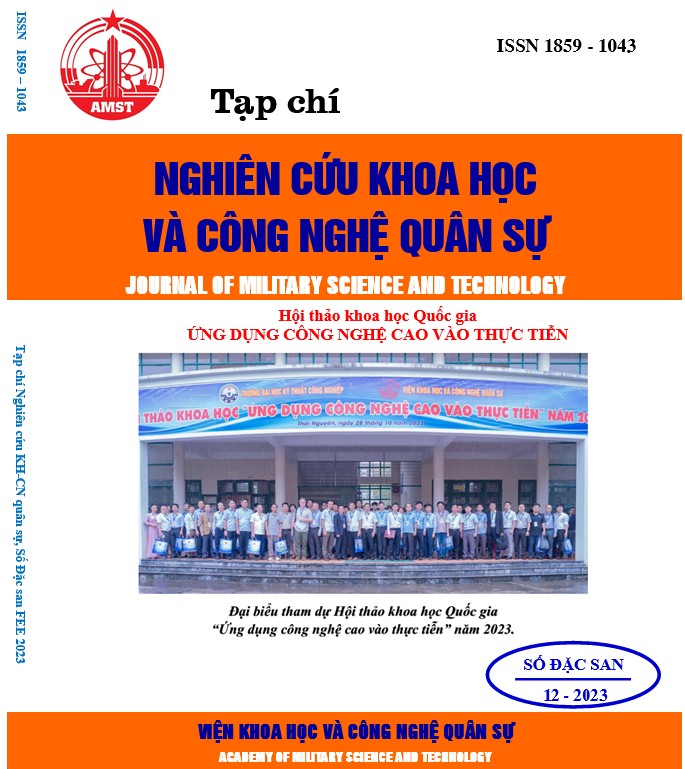Experimental study and numerical simulation of hardening behavior of steel 316L
277 viewsDOI:
https://doi.org/10.54939/1859-1043.j.mst.FEE.2023.190-196Keywords:
Hardening; Austenitic steels; Cyclic behavior; Simulation; Finite element.Abstract
Strain-hardening is a very significant parameter to evaluate the elastic behavior of a material, especially when numerically simulating the mechanical behavior of the material. In this study, cyclic tensile-compression tests for 316L steel samples were performed to determine the hardening parameters for models such as linear isotropic hardening, linear kinematic hardening, nonlinear isotropic hardening, nonlinear kinematic hardening, and Chaboche model. Thereby, the advantages and disadvantages of each model are assessed. Finally, behavior according to the Chaboche model was selected to propose building an algorithm for the numerical simulation of cyclic tensile-compression experiments. The obtained numerical results are in good agreement with the experimental results.
References
[1]. G.K. Quainoo, S. Yannacopoulos, and A.K. Gupta “Strengthening Characteristics of AA6111 Aluminum” Canadian Metallurgical Quarterly, vol. 40(2), pp. 211 – 220, (2001). DOI: https://doi.org/10.1179/000844301794388515
[2]. J. M. Meininger, S. L. Dickerson and J. C. Gibeling. “Fatigue Fract”. Eng. Mat. Struct., 19 (1), pp. 85-97, (1996). DOI: https://doi.org/10.1111/j.1460-2695.1996.tb00934.x
[3]. M. V. Borodii. Journal strength of mat., Vol 38, N°2, pp. 128-134, (2006). DOI: https://doi.org/10.1007/s11223-006-0024-7
[4]. J.B.Kim, et.al., “The Temperature Dependent Inelastic Material Characteristics of Cold-Worked 316L for NONSTA,” Proc. of the KNS, (2005).
[5]. Y.S. Ju, et.al. “High-Temperature Low Cycle Properties of Cold-Worked 316L Stainless Steel”, Proc. of the KNS, (2005).
[6]. S.H. Lee, et.al. “The Low Cycle Characteristics of Solution Annealed 316L Stainless Steel in High Temperature Conditions”, (in preparation) Proc. of the KNS, (2006).
[7]. Julie Colin, Ali Fatemi, Said Taheri “Cyclic hardening and fatigue behavior of stainless steel 304L”, J Mater Sci 46:145–154, (2011). DOI: https://doi.org/10.1007/s10853-010-4881-x
[8]. E.S. Puchi-Cabrera a,b, M.H. Staia a, C. Tovar a, E.A. Ochoa-Pérez, “High cycle fatigue behavior of 316L stainless steel”, International Journal of Fatigue 30, pp. 2140–2146, (2008). DOI: https://doi.org/10.1016/j.ijfatigue.2008.05.018
[9]. H.W. Huang, a Z.B. Wang, a, J. Lub and K. Lua, “Fatigue behaviors of AISI 316L stainless steel with a gradient nanostructured surface layer”, Acta Materialia 87, 150–160, (2015). DOI: https://doi.org/10.1016/j.actamat.2014.12.057







